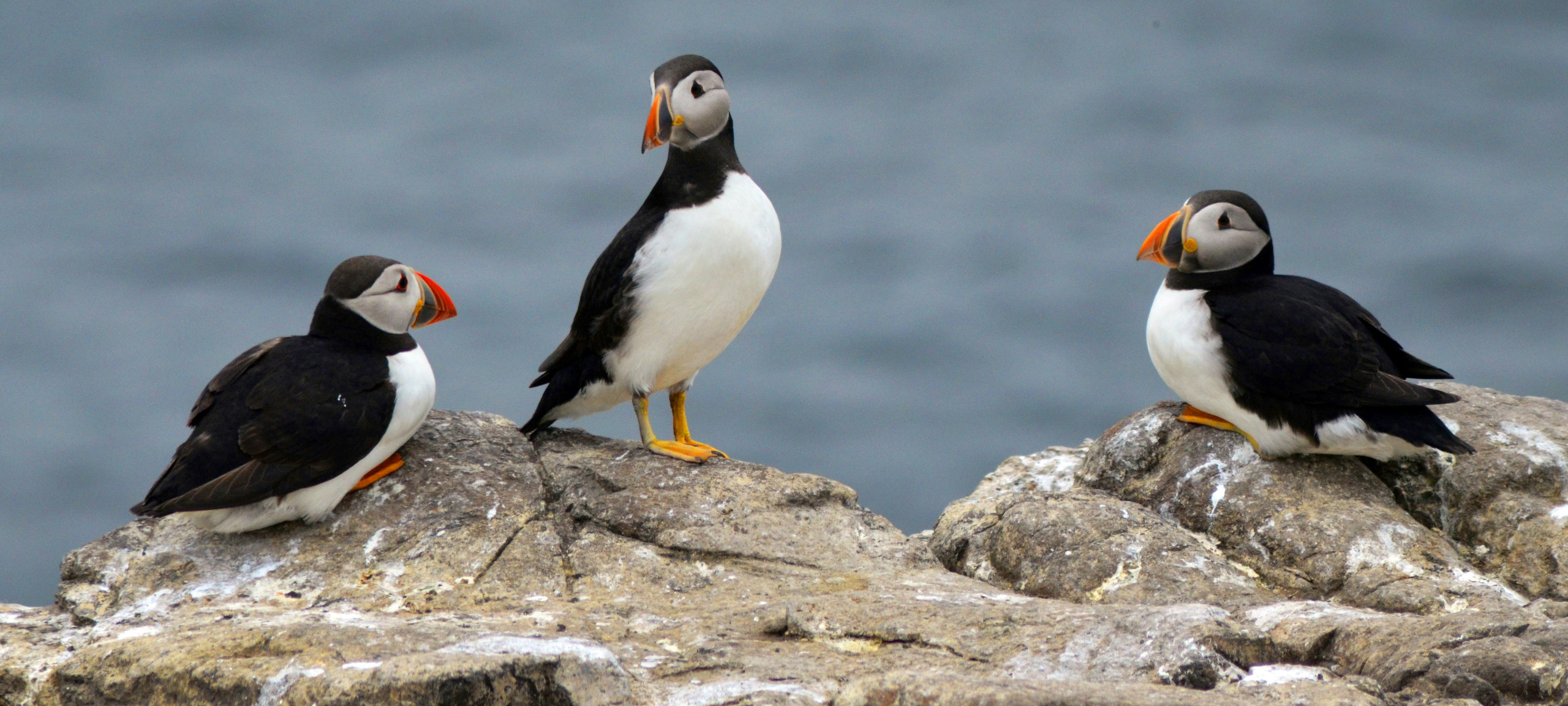
© David Heslop / Unsplash
ACO: On the predictability of the future
What puffins teach us about climate change
Looking into the future and making the right prediction? We all know this: whether in everyday life, in a relationship or in a professional context, it is not easy to make correct predictions. It becomes particularly difficult when decisions have to be made on uncertain terrain. An analogy between rat epidemics, puffin figures and climate change.
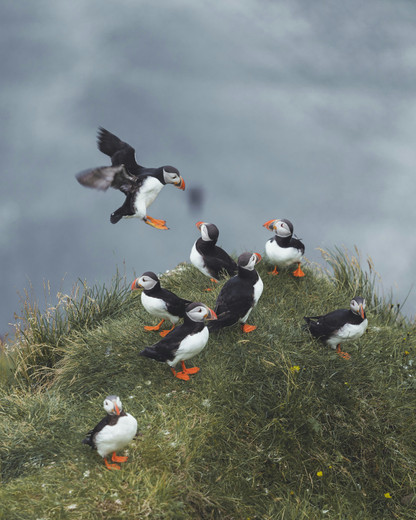
© Thomas Fatin / Unsplash
Puffins enjoy a special place in many societies due to their distinctive appearance and charming behaviour. In Wales, in the south-west of the United Kingdom, they are part of the cultural heritage and attract both locals and tourists. Their presence is often seen as an indicator of the health of marine ecosystems and their conservation is a concern for many conservation organisations.
They favour islands and cliffs with grassy areas where they build their nests in burrows. They return to the coast to breed, especially from April to July. They find ideal conditions on Skomer Island and Bardsey Island in Cardigan Bay, for example, where they are relatively undisturbed and find plenty of food in the surrounding waters. They also used to be found on Cardigan Island, which gives the bay its name. Until the cargo ship Herefordshire ran aground there during a heavy storm in 1934. Numerous rats from the stranded ship ended up on the island. The rats survived by eating the eggs and chicks of the ground-nesting seabirds. This led to the complete eradication of the puffin colonies on the island.
In the 1990s, schoolchildren came up with a new idea. They wanted to attract the breeding pairs with dummy puffins
Host City Premium Partner
The Ocean Race Europe 2025
When you try your best, but you don't succeed
When you get what you want, but not what you need
When you feel so tired, but you can't sleep
Stuck in reverse
- Coldplay, Fix You
YouTube
(Swedish House Mafia - Alesso remix)
Shortly afterwards, the inhabitants were keen to reintroduce puffins to the island. However, the island had to be rat-free first. This was only achieved 25 years later. Various attempts were then made to attract populations. In the 1980s, scouts created nesting sites for the birds to make the island more attractive to them. Without success. In the 1990s, schoolchildren came up with a new idea. They wanted to attract the breeding pairs with dummy puffins.
However, the requirements for the dummies were high. They had to be heavy enough to stand up in the wind. They had to withstand the harsh weather and salt air and look just like a real puffin. This is where the English ACO site in Shefford came into play. Together with the then Dyfed Wildlife Trust, a mould of a deceptively real-looking puffin was created and then 200 ‘real’ puffin blanks were cast from the recyclable ACO material polymer concrete.
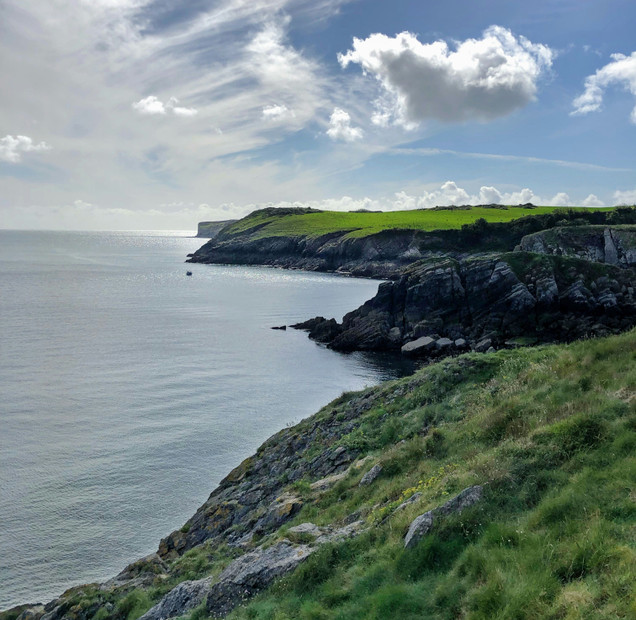
© Ion Sipilov / Unsplash
Welcome home, darling ...
The blanks were made available to school classes, who painted the figures true to life. The finished puffin sculptures were taken out to Cardigan Island and displayed in some of the nesting holes. The hope was that these almost lifelike-looking breeding pairs would attract numerous real-life imitators. Unfortunately, however, they have not been successful - until today. No more puffins have settled on Cardigan Island.
© ACO / Dyfed Wildlige Trust
In the context of climate change, however, the events that form the basis for clear, scientifically sound predictions about the future of our planet are piling up
It was not foreseeable that the rats would attack Cardigan Island. Even today, many processes in nature are not perceptible on a daily basis. In the context of climate change, however, the events that form the basis for clear, scientifically sound predictions about the future of our planet are becoming more frequent – and they are getting closer. Amelie Hoff from the German Weather Service in Offenbach says: ‘The DWD (Deutscher Wetterdienst) climate forecasting system has currently calculated a strong tendency – with a probability of 93 per cent – of another warmer-than-average late summer from July to September.’
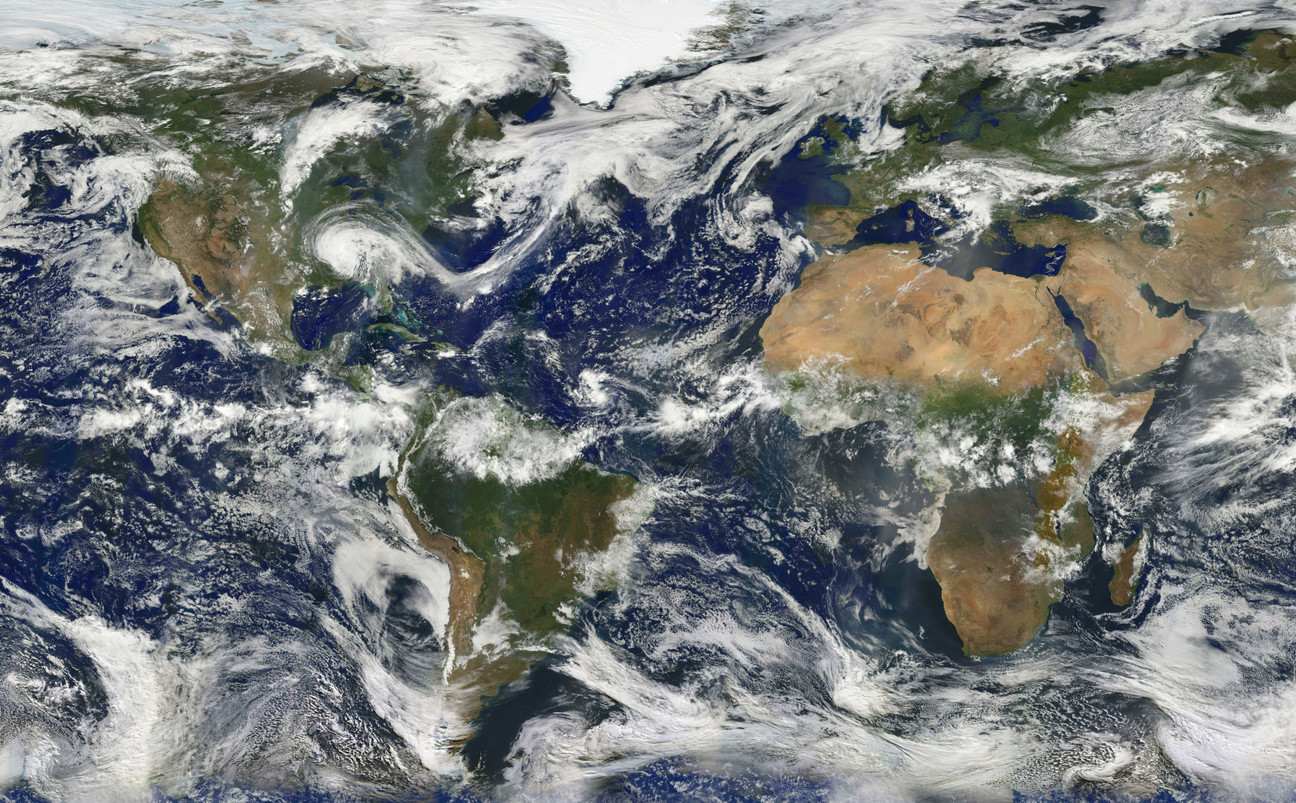
© NASA / Unsplash
If you follow the experts, the seasons are not only shifting to extremes sometimes, but more and more often as warming progresses. This affects individual heat peaks as well as summer rainfall and thunderstorms. A warmer atmosphere can absorb more moisture, draws considerable amounts of water from the soil and rains more frequently in heavy downpours. The threat of weather-related destabilisation increases the pressure for adaptation measures and makes weather experts, who need to improve their early warning systems, increasingly in demand. A lot of work is being done on more efficient seasonal and long-term forecasts. However, this is not entirely straightforward.*
Heatwaves, heavy rainfall events and flooding cannot be predicted with certainty. The only thing that is certain is that individual components of the climate system react to climate change at different speeds. This applies in particular to long-term cyclical processes such as wind movements over the oceans. In mid-2023, for example, there was an unprecedented warming of the surface temperature over the North Atlantic because the winds were weak. In the air, this is already a big step, but in the ocean it is a big leap, as it normally reacts rather slowly to temperature changes as a buffer. These marine heatwaves had a significant impact on the temperature and summer records that were set at the time.
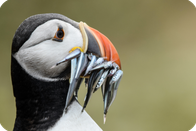
By the way:
A puffin can dive for up to one minute and to a depth of 60 metres. Under water, it steers with outstretched wings so that it almost looks as if it is flying. Its feet serve as rudders.
The rats on Cardigan Island were unpredictable. However, climate change is

© Jonatan Pie / Unsplash
The rats on Cardigan Island were unpredictable. However, climate change is – even if only in peaks – and it can be felt by us all. It has already passed the point of no return in many places. That is definitely visible. In view of this outlook, we should orientate our actions accordingly before it is too late.
*FAZ, 13.06.2025
© ACO – Report: Ralf Löwe / sonofasailor.de
Acquire article rights
